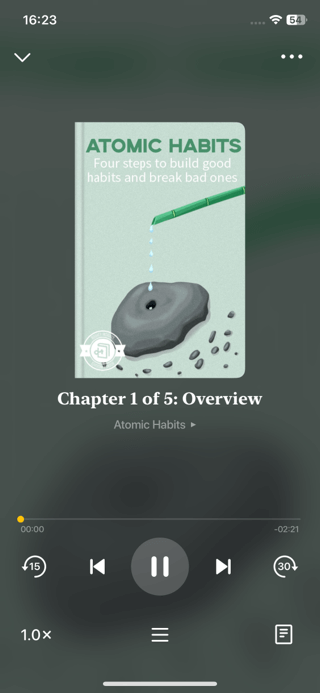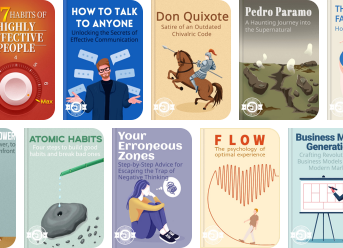Last updated on 2025/07/02
All Together Now Summary
Alan Doyle
Unity in friendship, music, and shared experiences.
Last updated on 2025/07/02
All Together Now Summary
Alan Doyle
Unity in friendship, music, and shared experiences.
Description

How many pages in All Together Now?
200 pages
What is the release date for All Together Now?
In "All Together Now," Alan Doyle weaves a heartfelt tapestry of music, family, and the unbreakable bonds that tie us together, drawing readers into his vibrant world where the power of song serves as a poignant reminder of connection and resilience. Through evocative anecdotes and lyrical reflections, Doyle shares his journey from the bustling streets of Petty Harbour to the heights of international fame with Great Big Sea, celebrating the spirit of community that has anchored him through life's melodies and challenges. This memoir invites readers to embrace their own stories of togetherness and belonging, encouraging them to find joy in the shared experiences that make life truly harmonious. Let the rhythm of Doyle’s words inspire you to discover the music within your own life and the connections that make it meaningful.
Author Alan Doyle
Alan Doyle is a multifaceted Canadian artist renowned not only for his successful music career as the frontman of the acclaimed band Great Big Sea, but also for his work as a writer, actor, and producer. Born in Petty Harbour, Newfoundland and Labrador, Doyle has captivated audiences with his charismatic stage presence and storytelling prowess, both in music and literature. His debut book, "Where I Belong," received widespread praise, establishing him as a talented author who weaves personal narratives with a sense of place and cultural identity. With "All Together Now," Doyle continues to explore themes of community and belonging, drawing upon his rich experiences in the music industry and his deep roots in Newfoundland. His ability to connect with readers through heartfelt anecdotes makes him a compelling voice in contemporary Canadian literature.
All Together Now Summary |Free PDF Download
All Together Now
Chapter 1 |
In July 2000, Alan Doyle and his band, Great Big Sea, experienced a surreal and thrilling moment as they performed in Central Park, New York City, on Canada Day. This gig marked a significant opportunity for the band to connect with the expatriate Canadian community in the United States, showcasing their music to an audience that could bolster their career. Alan, who had long been captivated by Manhattan and its iconic park, felt a sense of wonder as he prepared to take the stage. Great Big Sea was opening for The Tragically Hip, Canada's renowned rock band. Alan's excitement was palpable as he met the members of The Hip, especially their towering lead singer, Gord Downie, who greeted him warmly despite the intimidating aura he exuded. This encounter solidified Alan's sense of belonging in the music industry, as he perceived the event as a milestone for his career. The day was not without its challenges, particularly when Alan and his bandmates encountered Jeff Healey, a legendary guitarist known for his role in the film "Road House." Their interaction turned into a comedic yet awkward moment when Darrell, one of Alan’s bandmates, inadvertently led Jeff to the bathroom. This humorous debacle highlighted the surreal nature of their day, as the band found themselves stumbling over social cues with their musical idols. As memories of the concert unfolded, Alan also reminisced about his Uncle Reg, a larger-than-life figure whose colorful personality and tendency to embellish stories enchanted the young Alan and his brother, Bernie. Reg's tales, filled with adventure and bravado, painted him as an indestructible character, despite fate’s attempts to challenge him. Reg’s life was marked by a series of unfortunate accidents—from losing fingers in a sawmill accident to a harrowing encounter with a chainsaw—yet he bore these with humor and resilience. Each mishap became a part of his legend, further contributing to the admiration Alan and Bernie felt for him. Reg possessed a unique ability to turn life’s adversities into absurd stories, which resonated with the boys and shaped Alan's understanding of enduring hardship while holding onto joy. The narrative navigates between Alan’s formative experiences in the music world and his familial ties, emphasizing the contrasting realms of celebrity encounters and cherished childhood memories. The intertwining of these stories paints a vivid picture of growth, resilience, and the significance of relationships that shape one’s identity in the face of life’s unpredictability. Through laughter, challenges, and personal legends, Alan Doyle encapsulates the essence of community and the enduring spirit of those who inspire us.
Key Point: The power of resilience and humor in facing life's challenges.
Critical Interpretation: As you reflect on the stories woven together in Alan Doyle's narrative, let the resilience displayed by his Uncle Reg inspire you to embrace life's unpredictable nature. No matter how daunting the challenges may seem, like Reg's humorous encounters with hardship, you can learn to find levity even in struggle. Allow laughter to be your companion in tough times, crafting your own unique tales that highlight your strength and adaptability. This perspective not only strengthens your character but also connects you deeply with those around you, creating a sense of community and shared experience that enriches your journey.
Chapter 2 |
Over the years, the author has amassed a plethora of distinctly Canadian experiences, with each moment illuminating a unique facet of life in Canada. Among these moments, one story stands out—the Grey Cup final on November 25, 2007, in Toronto, an event that encapsulates the essence of being Canadian. It was an occasion marked by celebration, with performances from notable artists like Lenny Kravitz and the Barenaked Ladies. The author was able to attend with his lifelong friends Perry and Greg, both of whom have played significant roles in his life and career. 1. The excitement of the Grey Cup game was palpable, especially when the Saskatchewan Roughriders emerged victorious. In a spur-of-the-moment decision, emboldened by a few drinks and the electric atmosphere, the author proposed they venture onto the field to celebrate and hoist the trophy. Perry was initially skeptical, while Greg expressed concern, but with a determined nod from Perry, they all set forth on their daring escapade. 2. The trio utilized their “ENTERTAINMENT” passes to navigate towards the field, demonstrating the power of confidence in the face of authority. In their journey down the staff elevator, they encountered security, but the author’s quick thinking and assertive approach allowed them to slip past scrutiny, mingling with reporters and families, spiriting themselves closer to the action. 3. The thrill peaked as they approached the field, where revelry among Roughrider players was in full swing. A jubilant player handed the Grey Cup to the author, prompting an instinctive response—he kissed the trophy passionately, embodying the heartfelt joy of the moment. This unexpected yet delightful encounter not only solidified their presence on the field but also highlighted the rich camaraderie and celebratory spirit filling the air. 4. As the boys made their escape from the scene, aware of the increasing risk of being discovered, they reaffirmed their bond over a night filled with the quintessential “lads’ night out.” The following morning greeted them with the familiar aftereffects of indulgence, leading to humorous encounters with the Trailer Park Boys, alluding to shared experiences of debauchery. 5. The day took a serendipitous turn as the author and Great Big Sea performed at a charity concert featuring legendary Anne Murray. The surreal opportunity to sing alongside her instilled a sense of pride and excitement, especially considering her monumental status in Canadian music history. 6. The concert experience was a culmination of emotions; the author performed not only for the audience but in reverence to his roots and the significance of being part of such an artistic lineage. The moment of singing "Could I Have This Dance" with Anne Murray was transcendent—an intersection of fame and personal legacy that filled him with joy. 7. Following another jaunt through the night, the author reflected on the oddities of their escapades filled with local culture. This reflection led to a philosophical discussion on shared experiences, the commonality that binds people through laughter, struggles, and the casual moments spent in spaces like Tim Hortons. 8. The narrative juxtaposes religious musings that have stayed with the author since childhood, particularly centered around a unique biblical character—the man with the vinegar sponge. This ongoing fascination introduces a deeper layer to his perspective, and is characteristically woven into the portrayal of Newfoundland’s cultural and religious backdrop. 9. The musings intertwine with fond memories of pubs, revealing a trace of nostalgia as the author recalls his early experiences in Newfoundland culture, concluding with a reflection on the spirit that brings communities together—a theme manifested through music, camaraderie, and shared rites of passage. In summary, the chapter constructs a vivid tapestry of life’s exhilarating and poignant moments, celebrating Canadian culture through a personal lens. The intersections of sports, music, friendship, and faith create a rich narrative that resonates with the uniqueness of being Canadian, embracing the delightful unpredictability of life.
Chapter 3 |
Standing at the edge of the Thames beneath Westminster Bridge, Alan Doyle confronts a seasoned conman who has deftly swindled him out of his last twenty pounds. This tense exchange is filled with the energy of a bustling lunchtime crowd, amplifying Alan’s urgency as he demands his money back, threatening to take the man’s beloved bird as collateral. The year is 1989, and this marks the beginning of Alan’s adventures outside of Newfoundland, a transformative journey that introduces him to the sights, sounds, and complexities of urban life in London. Alan's journey began when he boarded a plane to visit his brother Bernie, who was studying in Harlow, just outside the grand city of London. This flight was not just a physical departure from his tranquil home; it represented a rite of passage, a chance to explore a world beyond his familiar surroundings. The excitement of his first-ever flight and the prospect of city exploration were heightened as he arrived at Heathrow Airport. In stark contrast to the small-town familiarity of Petty Harbour, Alan’s new reality was the sprawling metropolis of London, which was alive with energy and diversity. Once on the subway, Alan experienced another layer of novelty. The rush underground was exhilarating, and the journey punctuated by bursts of sunlight made him acutely aware of his transition from the quiet landscape of home to the frenetic pace of city life. His first encounter with a Hare Krishna monk impresses him, showcasing London's eclectic vibe, and his awe only grows as he grapples with the vastness of the city, where every moment presents an unexpected wonder. The adventure deepens as Alan explores London in the company of Bernie, who introduces him to savory delicacies that challenge the stereotype of bad British cuisine. This culinary awakening, coupled with cultural landmarks, ignites Alan's enthusiasm for his trip. His senses are heightened as he savors Indian curry and freshly prepared street food, reinforcing that his preconceptions of the city were far from reality. A key aspect of Alan's journey is his first foray into Dublin, where he experiences significant milestones, including trying Guinness for the first time and navigating the nightlife. This visit symbolizes a deeper connection to his roots, as he recalls the Irish heritage that resonates with his own Newfoundland background. The trip exposes him to numerous firsts, from exploring ancient sites to navigating the complexities of urban living, culminating in unexpected escapades that include a humorous sprint through Dublin's streets. Their adventures take a turn when they return to London for the night ferry ride. Amidst this backdrop, Alan finds himself bemused and intrigued by a French street performer who lures him into a trap, taking his last twenty pounds in exchange for a picture with a bird. This moment symbolizes not just naivety but also Alan's broader transition into adulthood, showcasing the balance between youthful enthusiasm and the harsh lessons of the real world. Determined not to be merely a victim of circumstance, Alan takes charge in a dramatic showdown with the conman, where he literally and metaphorically seizes back his agency by reclaiming his money. This act not only signifies a triumphant moment of self-realization but also marks his first step towards becoming a more assertive individual, willing to stand up for himself in the world. In the aftermath of this encounter, Alan returns home to Newfoundland, greeted by the comforting aromas of his mother’s cooking. However, his experience in London lingers in the form of photographs from the Frenchman that provide a visual reminder of his journey. This stark mix of pride and embarrassment serves as a growing pain, leading him to reflect on his own identity while navigating the realms of both adventure and misadventure. Returning to London in the years to come, Alan holds onto the memories of that pivotal trip, the friendships forged, and the lessons learned. The enduring bond with his brother and the adventures they shared foster a relationship steeped in mutual respect and shared growth, demonstrating how journeys shape not only individuals but also the connections they hold dear. As Alan and Bernie reminisce over pints in their favorite pub, the throne-like barstool serves as a symbol of their shared experiences, victories, and the inevitable march of time. This mix of nostalgia and camaraderie encapsulates the essence of their brotherly bond, solidifying a story filled with compassion, resilience, and the endless pursuit of life’s wonders.
Key Point: Embracing the Unexpected
Critical Interpretation: Alan's confrontation with the conman serves as a powerful reminder that life is unpredictable and often challenging, yet it also highlights the importance of seizing moments of adversity to reclaim our agency. Imagine finding yourself in a similar situation, faced with a setback or betrayal. Instead of succumbing to frustration, you can draw strength from Alan's experience—by confronting the obstacle with determination and wit, you too can navigate the complexities of life. This moment not only inspires courage but also encourages a proactive approach to life's challenges, urging you to transform adversity into opportunity. Just as Alan emerged from that encounter with a deeper sense of self, you can find empowerment in your own battles, reminding you that every struggle is a stepping stone on the journey to resilience and growth.
Chapter 4 |
In Chapter 4 of "All Together Now" by Alan Doyle, the deep bond between the narrator and his brother Bernie is highlighted, showcasing the unique dynamics of their upbringing in Petty Harbour, Newfoundland. Despite the age difference, Bernie often looks younger than his brother, leading to humorous comments from both sides. Their close relationship, marked by both warm moments and typical sibling squabbles, was primarily crafted through a variety of hard labor projects assigned by their father, who held a strong aversion to idleness. 1. Work Ethic: The father instilled a sense of diligence in both boys, encouraging them to embrace work as opposed to laziness. This philosophy reflected an essential rule in their household: the only unforgivable act was doing nothing. Consequently, weekends would be filled with tasks, ranging from carrying firewood to more complicated chores. 2. Absurd Labor Projects: An amusing recollection involved the boys begrudgingly moving wood repeatedly without any logical sequence, which served as an allegory for the seemingly pointless nature of their father’s chores. These experiences brought them together, forging a deeper bond over the repetitive, strenuous tasks. 3. Building a Basement: They unexpectedly face the daunting challenge of digging a basement under their house, which had been constructed without one. Their father's enthusiasm for the project was matched only by the boys' disbelief at the absurdity of digging a basement after the house was already built. The chapter details their laborious experience of tackling massive boulders and navigating through unexpected obstacles, ultimately showcasing the humorous yet challenging journey of familial togetherness. 4. Challenges and Overcoming Obstacles: Despite the physical toil and the humorous setbacks, such as encountering a startled mink, the boys developed persistence and teamwork as they attacked the monumental job. The vivid descriptions of their labor highlight their resilience, creativity in hauling rocks out of the basement, and the unexpected fun that comes with overcoming challenges together. 5. Significance of the New Space: After weeks of grueling labor, the basement finally transformed from a muddy cavity into an envisioned room. This space represents not just a physical presence but a metaphor for growth, as it symbolizes both the hard work they put into transforming their lives and the collective memories built there as a family. The chapter wraps with a transition to tales from the narrator’s life as a musician, emphasizing the friendships established on a journey that intertwines with past experiences, including humorous incidents with Scottish friends and their shared love for music and camaraderie as they navigate through life’s adventures on the road.
Key Point: Work Ethic
Critical Interpretation: Imagine waking up each day with a purpose—that sense of urgency echoing from your childhood, instilled by a father who believed idleness was the only true sin. As you look back on your own upbringing, you might find memories of hard work and the satisfaction that follows. The lesson from this chapter resonates deeply: embracing work, no matter how mundane or absurd it may seem, carves a pathway toward growth and accomplishment. Each task completed, each challenge embraced, acts as a building block in your personal development, connecting you with those you share the journey with. Like the narrator and Bernie, you may remember that it’s often through the struggles and laughter shared in the trenches of hard labor that the strongest bonds are formed, inspiring you to tackle your own challenges with enthusiasm and a spirit of togetherness.
Chapter 5 |
In the fall of 2018, the author embarked on an expedition with Adventure Canada, joining an adventure tourism group aboard a ship for a ten-day journey around Newfoundland. As a member of the Cultural Resource team, he had the unique opportunity to engage in both performance and hands-on tasks, such as loading luggage and managing lifeboats. From the moment he set sail from St. John’s, he felt a profound connection to the maritime history that shaped the region. Upon arrival in Bonavista, he was enchanted by the waterfront, which was vibrant with life as the town thrived post-cod moratorium. The author's ride in a Zodiac to shore revealed serene waters, enhancing the magic of the experience. His excursion to Elliston, famous for its root cellars—ingenious subterranean storages crucial for winter sustenance—offered him insights into sustainable practices of the past. The preserved history of the town, a puffin colony, and the Sealers Museum highlighted the vital role sealing played in community survival. The journey continued to Little Bay Islands, once bustling with fishing activity, where two local hosts shared childhood memories of a vanished era. The visit reminded him of the fragility of rural communities, urging a sense of urgency to experience their unique heritage. St. Anthony marked another stop, filled with the beauty of its harbor and the historical significance of Grenfell’s contributions to medicine. The quest for L’Anse aux Meadows resonated deeply; it was thrilling to stand at a site proving Norse exploration predated Columbus. This fulfilled a dream for the author and underscored the rich narrative woven into Newfoundland's past. In stark contrast, the northernmost tip of the island offered a personal revelation, as he finally glimpsed the Canadian mainland from Newfoundland, crystallizing his identity as a first-generation Canadian. After sailing to Labrador and exploring UNESCO-designated Red Bay's whaling history, they anchored at Woody Point in Gros Morne National Park. Here, he led a hike in the stunning Tablelands, further augmenting the week’s awe-inspiring encounters with nature. A standout experience occurred in La Poile Bay, where the crew engaged in an invigorating exploration of untouched wilderness, reinforcing the sense of adventure and solitude. The next stop, Francois, a unique carless settlement, allowed him to witness life in a bygone era without modern conveniences, inspiring admiration for the resilience of its residents. As the expedition neared its end, they visited a vibrant Native reserve at Conne River, celebrating the cultural richness and achievements of its community. At this point, he participated in a spirited drum circle, forging connections and celebrating shared experiences. The final leg of the journey led them to the French territory of Saint-Pierre-et-Miquelon, where the blend of French culture in an otherwise North American setting fascinated him. The unique characteristics of the islands contrasted sharply with nearby Newfoundland, enriching his understanding of cultural diversity. Throughout this journey, he forged deep connections to the landscape, history, and the people of Newfoundland and Labrador, concluding with a poignant return to St. John’s, where his family awaited. The entire experience awakened a newfound appreciation for his homeland and its intricate relationship with the land and sea. This ten-day journey underscored several key realizations: 1. The beauty of Newfoundland is even more profound than anticipated, revealing the vastness of its landscapes and histories. 2. The deep-rooted connection between people and the land creates a unique cultural identity that shapes life in Newfoundland and Labrador. 3. As he reflected on the communities visited, he recognized their fragility and vibrant history, urging an appreciation for the individuals who inhabit and contribute to these locales. 4. Lastly, the adventure nurtured a stronger bond with his roots, solidified by the experiences and the love for home, bringing to light a sense of belonging and pride in his identity as a Newfoundlander. Reaching the harbor was not just a physical return, but a culmination of personal growth and exploration. The glimpse of his family on the shore transformed the moment into one of joyful anticipation, highlighting the emotional resonance of homecoming. As the ship docked, he realized that even amidst adventure, the true treasure lies in the connections made and the love shared in the journey of life.
Chapter 6 |
In "All Together Now," Alan Doyle reveals his scattered nature, offering a humorous and poignant reflection on life experiences filled with engaging anecdotes and candid insights. The chapter opens with Doyle’s self-deprecating acknowledgment of his scatterbrain tendencies, sharing how his daily life involves a constant struggle with distractions and organizational chaos. His wife, Joanne, and colleagues act as reminders, anchoring him to reality. This theme of distraction and chaos is woven through his life, paradoxically enhanced by the cherished interactions with his elderly neighbors—a rite of passage that reveals the comforting rhythm of communal life. The heart of the story captures the endearing exchanges with Mr. Murray and Mr. Bowering, two elderly gentlemen who embody the spirit of memory and storytelling on the street where Doyle lives. The deep-seated relationships shine through their morning greetings and historical anecdotes, painting a warm picture of neighborhood camaraderie. However, following the poignant news of Mr. Murray’s passing, a miscommunication arises due to Doyle’s scatterbrain nature, as he mistakenly informs his wife that it was Mr. Bowering who died when, in fact, he was still alive at the time. This error leads to bittersweet humor as Mr. Bowering is later seen driving his convertible around the corner, creating a moment of levity amidst the solemnity, depicting life’s unpredictable nature. As the chapter progresses, Doyle delves into his love for social drinking, recalling formative moments in his life where the drink represented a reward for hard work. His relationship with alcohol becomes a mirror reflecting joy and occasional folly, capturing both the camaraderie and occasional pitfalls that accompany social imbibing. He recounts a humorous fable involving "Scrumpy Jack," where a seemingly innocent drink leads to unexpected embarrassment, illustrating that while alcohol can be a loyal companion, it often demands respect and moderation. Transitioning into the theme of family, Doyle describes his upbringing with his siblings, expressing gratitude for the structured guidance of their mother against the chaotic and humorous traits inherited from their father, echoing a universal experience of familial love. The contrast between his upbringing in a small fishing town and his son Henry's life in a bustling city generates a humorous yet introspective examination of parenting dynamics and evolving generational values. The juxtaposition highlights the challenges and joys of navigating parenthood in a rapidly changing world. Doyle’s reflections on fame add another layer to the narrative. He describes his gradual ascent in the music industry, emphasizing the communal spirit of Newfoundland that both supports and keeps him grounded. The humorous anecdotes of encounters with fans reveal the light-hearted nature of fame in a small community where personal connections reign supreme. The shifts in how people recognize him—from “my mom loves your band” to “my nan loves your band”—enrich the narrative with nostalgia, humor, and a poignant realization of the passage of time. As he transitions from being a local musician to a beloved public figure, Doyle grapples with the implications of his fame on his identity, relationships, and the expectations that accompany it. His humorous escapades, grounded in self-awareness, lead him to embrace both the laughter and vulnerabilities that come with being in the limelight. Through it all, the importance of friendship, family, community, and a shared narrative emerges as the common threads binding different phases of his life. Overall, Chapter 6 of "All Together Now" captures Doyle's multifaceted journey with relatable authenticity, filled with lessons learned through laughter and the tragedy of loss. It paints a vivid picture of life's unpredictability and the joy found in the connections that define our human experience.
Chapter 7 |
In an unexpected yet thrilling turn of events, Alan Doyle, known for his music with Great Big Sea, receives a phone call from his friend Russell Crowe, who invites him to audition for a role in Ridley Scott's Robin Hood film, specifically as the musician Allan A'Dayle. Instantly, Doyle's life takes a Hollywood twist as he races to purchase a lute and prepares for a table read. His journey is colored by a mixture of excitement and nerves, leading him to remember past moments when he first encountered Crowe. Years prior, Doyle fantasized about meeting Crowe after hearing that the actor was a fan of his music. The connection solidifies when they finally meet backstage at an NHL awards show, where to Doyle’s surprise, Crowe recognizes him and expresses his admiration. This moment opens the door for collaboration, leading to songwriting sessions between the two and further deepening their friendship. Fast forward to the Robin Hood auditions, where Doyle's nerves are palpable as he sits among seasoned actors, yet he manages to secure his role. His experience on set is nothing short of overwhelming, especially when he realizes the iconic actors he’s working alongside, including Scott Grimes and Kevin Durand. Doyle describes the set and the intricacies of his character, providing a glimpse into the behind-the-scenes magic of filmmaking. As filming begins, Doyle faces the inevitable mistakes that come with being a newcomer in a complex industry. Whether it’s fumbling with arrows during dramatic scenes or grappling with dialogue delivery, his struggles are met with support from his co-stars, who graciously guide him through the learning curve. Their camaraderie reinforces the idea of teamwork in creative work, of learning and growing together amidst challenges. Amidst humorous moments and heartwarming camaraderie, Doyle shines in his strengths: songwriting. His ability to compose on the spot leads to the creation of a catchy tune called “Large Breasted Woman,” which becomes a fan favorite. This spontaneity captures the essence of Doyle's artistic spirit and adaptability in a new environment. Doyle reflects on his journey through music, emphasizing the importance of humility blended with confidence in performance. He shares anecdotes that illustrate the lessons learned through years of live performances, from local gigs to major festivals. The mix of humility and bravado becomes central to his approach as he navigates the unpredictability of live shows, sharing insights that resonate with any artist's experience. Ultimately, the chapter celebrates the richness of collaboration in the arts and the inherent messiness that accompanies the path to creativity and success. Doyle’s narrative is both humorous and introspective, marking not just a personal journey but an appreciation for the connections and community that music can foster. As he concludes, he expresses a longing for the communal experience of live performances, as well as gratitude towards those who have supported him throughout his career, underscoring the significance of shared moments in the world of entertainment. Alan Doyle’s story serves as an inspiring testament to resilience and the power of believing in oneself while navigating through the challenges of following one’s passion in the arts.










